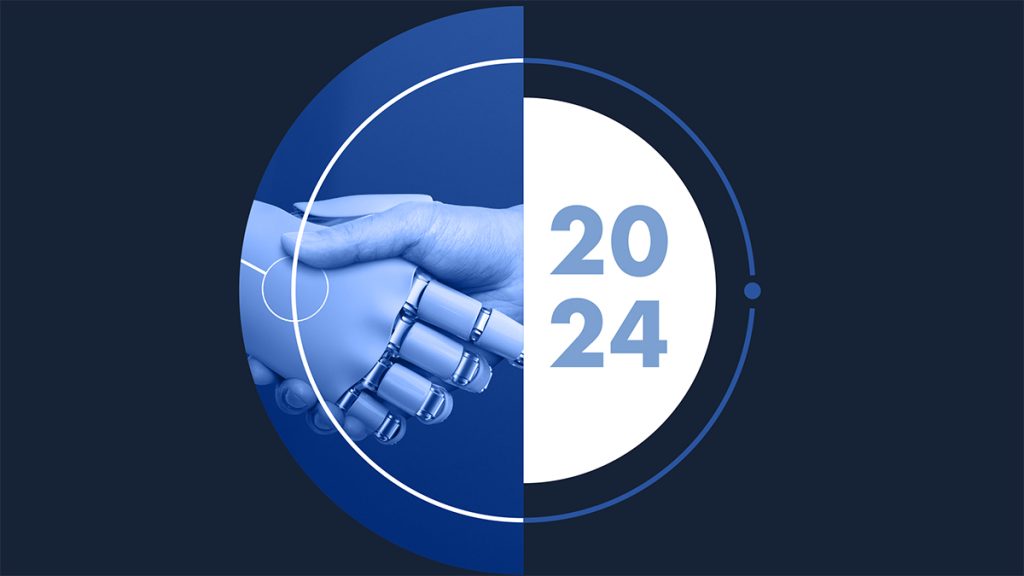New research from Missouri School of Journalism’s Jon Stemmle: Communicators adopting AI tools with astonishing speed

COLUMBIA, Mo. (June 25, 2024) — Missouri School of Journalism Professor Jon Stemmle has expanded upon the AI research report he co-authored late last year, conducting a new survey that revealed the rapid pace of change in attitudes toward AI in strategic communication.
As before, the new report was co-authored by Stemmle and Mark Dollins, president of North Star Communications Consulting.
“It’s difficult to stay on the cutting edge of technology that is evolving as quickly as generative AI, but Jon is showing us where that edge is by tracking how communicators are actually using AI in their work,” said David Kurpius, dean of the School of Journalism. “This work cuts through the speculation and hyperbole, showing professionals how this technology is already creating unprecedented impacts and showing students what they can expect when they enter the industry.”
A total of 129 people (all employee communications professionals) in the U.S. and internationally completed the survey, a significant increase over the 75 respondents in the prior effort, and though only nine months passed between the surveys, there were striking differences.
The words people used to describe AI were starkly different. We went from kind of fear and anxiety to ‘Oh, I kind of like this. This is actually helping me.’
Jon Stemmle
“The words people used to describe AI were starkly different,” Stemmle said. “We went from kind of fear and anxiety to ‘Oh, I kind of like this. This is actually helping me.’ In nine months, we went from trepidation to closing in on ‘can’t live without it.’”
The results indicated a 21% rise in the use of generative AI among employee communicators, coupled with a 7% decline in concern about the potential for AI to replace human jobs — the latter a particularly notable finding given that questions about AI’s impact on the job market remain a hot topic of discussion.
A few specific applications of AI saw a major boost. Adoption rates for content generation spiked 375%, while assistance with creating video scripts saw almost as high of a jump. Regardless of the application, however, the vast majority of those surveyed claimed they were saving anywhere from one to five hours per week or more with the help of AI.
“It’s really telling because if you think about past adoption of things like social media, it wasn’t that fast,” Stemmle said. “People were really hesitant and asking questions like, what is this? What can happen? How much time and money will it cost? Employer communicators saw very quickly the value in speeding up the process for things they don’t like doing.”
It’s difficult to stay on the cutting edge of technology that is evolving as quickly as generative AI, but Jon is showing us where that edge is by tracking how communicators are actually using AI in their work.
David Kurpius
But even as strategic communicators are clearly accelerating their use of the technology, barriers remain. More than three quarters of respondents said that though their employers are using AI for business purposes, those purposes did not include communications. Moreover, less than half said their organization has a clear AI policy.
Stemmle said it’s likely that some of this hesitancy can be attributed to lingering questions about data privacy — for example, organizations could be concerned that using AI to draft a communication about a yet-to-be released product could expose confidential information about that product to people outside the organization. At the same time, organizations are already beginning to address this concern by building their own tools in-house, with 9% of respondents claiming to use a customized form of GPT.
Stemmle sees which way the wind is blowing and is already preparing his students for a future in which AI will intersect with most workflows: his students currently use image and video generation tools to help them create TikTok videos, and Stemmle has also incorporated lectures on proper prompt techniques. He expects AI to become an even more important educational tool in the coming years as standards and models around how these tools are used in classrooms begin to take shape around the country.
In the meantime, Stemmle and Dollins plan to follow up again in 2025 with another survey.
“I think we’re going to keep seeing the growth and acceptance of this technology,” Stemmle said. “Everyone I’ve talked to is thinking about this as the next paradigm shift in our industry. It was internet, then it was social media, and I think Ai is the next huge change in the industry. I’ll be curious where it goes next.”
See the report here.
Updated: June 27, 2024